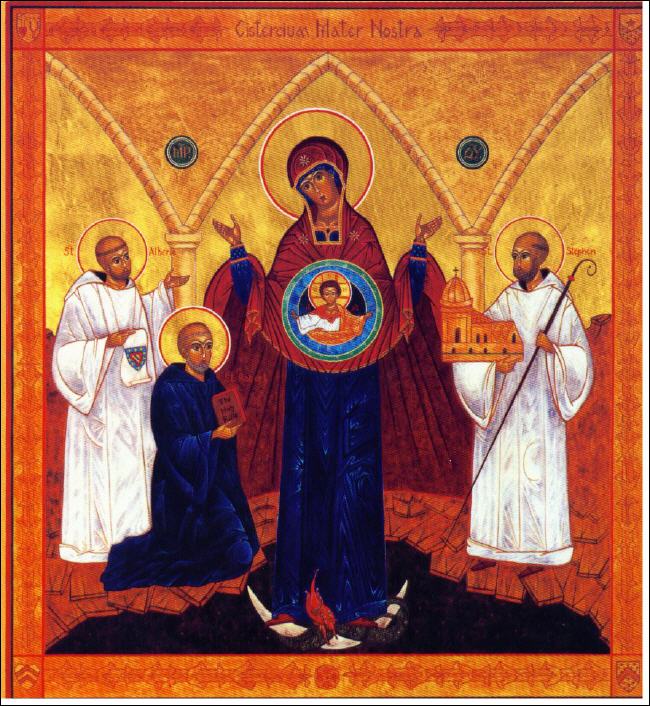Our origins
The Cistercian Order is born in France in the Middle ages. Saints Robert, Alberic and Stephen founded the reformed monastery of Cîteaux in 1098. Their aim was to refresh the institutional forms of monastic life and to bring them into closer conformity both with the Rule of Saint Benedict and with the aspirations of the age. In particular this involved an emphasis on authentic poverty and simplicity even in the liturgy, living from the work of their own hands .
It is Stephen (in 1112) who welcomed as a novice a young man named Bernard who entered the monastery with a group of thirty of his family members and companions.
This fervent young man was to become famous in his time, preacher, adviser of popes and kings, founder of many monasteries….His mystical writings, in particular his beautiful sermons on the Song of songs have influenced countless people until our times.
Yet, in spite of the great impulse given to the Cistercian Order by Saint Bernard, he is not its founder.
From the beginning, women were inspired by the spirituality of the “New Monastery” and St Stephen welcomed them into the Order .
Soleilmont, the founding house of Ananda Matha Ashram, was officially affiliated to Cîteaux in 1237 .
The Cistercian Order was subject to many reforms throughout the ages. The most famous is the reform of the Abbey of “la Trappe” in the 17th century due to the Abbot de Rancé. This is why Cistercians are sometimes called Trappist monks and nuns.
the 25 years following the Second Vatican Council, the Order was engaged in renewing its Constitutions according to the spirit of the Council. This has resulted, in the first place, in a greater awareness and appreciation of the richness of its heritage of spirituality and practice and, secondly, in the recognition of the necessity of a greater degree of pluralism in order to facilitate inculturation and to allow the Cistercian charism to be lived in greater integrity in the many different parts of the world to which it has spread in recent times.


Vierge de Cīteaux, fondation
(C) 2006 - All rights reserved